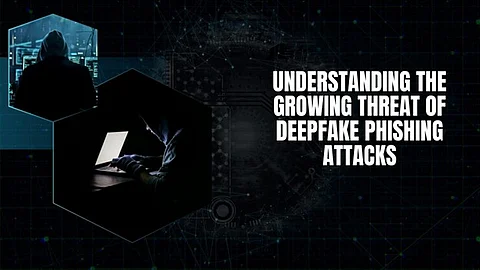

The social engineering techniques which were in practice for decades in the domain of cybersecurity now serve as weapons in the hands of cybercriminals to induce people into revealing their confidential information. An unprecedented level of risk in deepfake phishing has been created by this deep learning and artificial intelligence-imbibed new threat. As explored in Siva Krishna Jampani article, the combine application of the deepfake technology and phishing schemes have gestated an unprecedented level of offensive cyber-attacks against individuals and institutions globally. These attacks have to date tricked even exceptionally alert employees into compromising the organization's security, thus causing financial losses and reputational damage.
For a long time, phishing attacks have sought to dupe people into disclosing personal or sensitive information through fake emails or misleading messages. With the emergence of deepfake technology, things have taken a different turn and gone on to become some of the most convincing and lethal. Deepfake technology has made phishing tactics into nowadays highly sophisticated and deceptive strategies, whereby an online criminal can create hyper-realistic media that so perfectly imitates bona fide individuals that it keeps getting harder to detect. The subsequent metamorphosis of this phenomenon into Social Engineering 2.0 has severely changed the cybergain landscape with depletion of relevance to traditional means of defense.
Attackers, with the aid of deepfake technology and advanced neural networks like GANs, can produce their highly realistic fake media. Attackers are able to recreate an individual’s speech or likeness with crystalline precision by collecting publicly available audio, video, or image samples of the target. For instance, a deepfake voice call might impersonate the CEO instructing an employee to wire funds to a fraudulent account. Deepfake videos, too, can be used in tandem with emails and video conferences to present a false impression of authority, coercing an employee into a decision based on this deception.
The psychological factor contributed to the intensity of impact on such attacks. Since the deepfake media appears to be real, employees feel that they can trust the communications and will follow instructions without any suspicion. This deep factor works like magic in far remote communications.
As deepfake technology has advanced, so too has its ability to create more convincing content. The accuracy of both voice and video deepfakes has improved dramatically over recent years. In 2018, deepfake voice tools achieved an accuracy rate of 73%, and deepfake video tools had an accuracy rate of 68%. By 2023, these figures rose to 96% for voice and 94% for video. This increase in accuracy has made it far more difficult for individuals to distinguish between authentic and fake communications. The growing sophistication of these tools poses significant challenges for cybersecurity professionals, as traditional detection methods are increasingly ineffective.
The financial consequences of deepfake phishing are severe and widespread. The research highlights the finance and healthcare sectors as the most vulnerable, with deepfake phishing attacks leading to substantial financial losses. In the finance sector, a deepfake voice phishing attack in 2023 resulted in a $243,000 loss when an attacker impersonated a CEO. Similarly, healthcare organizations are at risk of data breaches, as deepfake phishing is used to exploit sensitive patient information. Beyond the direct financial damage, these attacks can also severely affect an organization’s reputation and customer trust, which can take years to rebuild.
Deepfake phishing is a growing menace and calls for technological solutions as well as a humanistic approach to be taken seriously. The article stresses the need for advanced detection tools that would enable the identification of fake AI content before it gets to the target. These tools, through machine learning algorithms, try to detect deepfakes that bear subtle inconsistencies that may not be apparent to the naked eye, such as unreasonable sequential eye movement and audio artifacts.
However, Said article mentions the importance of cyber-risk awareness training among employees instead. Accepting the limitations of traditional training programs focusing merely on basic deepfake phishing recognition will not suffice. Employees must now be taught to think critically, verify things across communication channels, and become skeptical when dealing with sensitive requests.
Overall, just as deepfake technology is continuously advancing, the solutions for countering these new and advanced threats must keep pace with innovation. Siva Krishna Jampani's research increasingly argues for an approach that combines next-gen AI detection methods with enhanced employee training and rigid rules governing the creation and use of synthetic media. Sold as organizational and individual viewpoints for addressing such threat mappings, staying alert, adopting new technology, and cultivating cybersecurity awareness shall be the essence in perhaps any organization's best approach. To combat deepfake phishing, every industry has to come together to secure digital communications.
